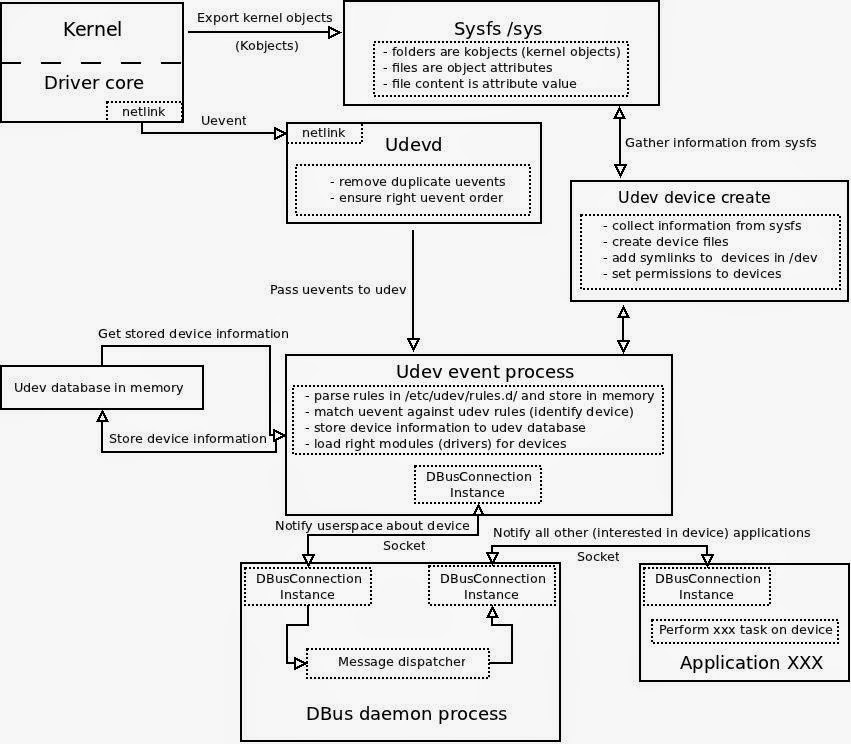.
TI에서 제공하는 Filesystem 사용
- emmc_backup_2014_90_30.img의 filesystem을 지우고, TI-Filesystem 대체
- emmc_backup_2014_90_30.img resize
2. Image 수정
FAT는 Boot file이기에 건들지 않고, Linux File system만 외부의 파일 system에서 가져와
새로 파티션을 만들어 수정한다.
2.1 각각의 Image 구성 확인
- 각 구성은 1. boot 2. Linux filesystem 으로 구성
$ fdisk -l /media/sf_SHARED/emmc_backup_2014_09_30.img
Disk /media/sf_SHARED/emmc_backup_2014_09_30.img: 7818 MB, 7818182656 bytes
255 heads, 63 sectors/track, 950 cylinders, total 15269888 sectors
Units = sectors of 1 * 512 = 512 bytes
Sector size (logical/physical): 512 bytes / 512 bytes
I/O size (minimum/optimal): 512 bytes / 512 bytes
Disk identifier: 0x000c4046
Device Boot Start End Blocks Id System
/media/sf_SHARED/emmc_backup_2014_09_30.img1 4096 266239 131072 b W95 FAT32
/media/sf_SHARED/emmc_backup_2014_09_30.img2 266240 11532287 5633024 83 Linux
2.2 Image 수정
두번째 파티션 지우고 동시에 새로운 파티션을 만드며,각 사이즈를 정하고, Sector 크기를
2의 배수로 정한다. ( 1 Block이 2 Sector)
$ fdisk /media/sf_SHARED/emmc_backup_2014_09_30.img
Command (m for help): m
Command action
a toggle a bootable flag
b edit bsd disklabel
c toggle the dos compatibility flag
d delete a partition
l list known partition types
m print this menu
n add a new partition
o create a new empty DOS partition table
p print the partition table
q quit without saving changes
s create a new empty Sun disklabel
t change a partition's system id
u change display/entry units
v verify the partition table
w write table to disk and exit
x extra functionality (experts only)
Command (m for help): d
Partition number (1-4): 2
Command (m for help): p
Disk /media/sf_SHARED/emmc_backup_2014_09_30.img: 7818 MB, 7818182656 bytes
255 heads, 63 sectors/track, 950 cylinders, total 15269888 sectors
Units = sectors of 1 * 512 = 512 bytes
Sector size (logical/physical): 512 bytes / 512 bytes
I/O size (minimum/optimal): 512 bytes / 512 bytes
Disk identifier: 0x000c4046
Device Boot Start End Blocks Id System
/media/sf_SHARED/emmc_backup_2014_09_30.img1 4096 266239 131072 b W95 FAT32
Command (m for help): n
Partition type:
p primary (1 primary, 0 extended, 3 free)
e extended
Select (default p): p
Partition number (1-4, default 2): 2
First sector (2048-15269887, default 2048): 266240
Last sector, +sectors or +size{K,M,G} (266240-15269887, default 15269887): 1712089 //1606499 -160650 = 1712089
Command (m for help): p
Disk /media/sf_SHARED/emmc_backup_2014_09_30.img: 7818 MB, 7818182656 bytes
255 heads, 63 sectors/track, 950 cylinders, total 15269888 sectors
Units = sectors of 1 * 512 = 512 bytes
Sector size (logical/physical): 512 bytes / 512 bytes
I/O size (minimum/optimal): 512 bytes / 512 bytes
Disk identifier: 0x000c4046
Device Boot Start End Blocks Id System
/media/sf_SHARED/emmc_backup_2014_09_30.img1 4096 266239 131072 b W95 FAT32
/media/sf_SHARED/emmc_backup_2014_09_30.img2 266240 1712089 722925 83 Linux
Command (m for help): w
2.3 Image Resizing
위의 emmc_backup_2014_09_30.img 의 경우 아직 7818MB이며, 15269888 sectors 사용중 하지만 우리의 새로운 image의 end는
아래와 같이 dd 명령어를 사용해서, image를 resize를 한다.
마지막 sector가 1712089 이고 해서, 이를 짝수를 맞추고, 여분을 주기위해서, +1011줌.
현재 1 block = 2 sectors
* bs size에 속도차이가 심함
count 값은 위의 sectors 값을 반으로 나눈값 , bs를 변경 해도 됨
$ dd if=/media/sf_SHARED/emmc_backup_2014_09_30.img of=/media/sf_SHARED/test_newImage.img bs=1k count=$(((1712089+1011)/2))
결과물로
test_newImage.img
3. Filesystem 복사
$ fdisk -l /media/sf_SHARED/test_newImage.img
Disk /media/sf_SHARED/test_newImage.img: 877 MB, 877107200 bytes
255 heads, 63 sectors/track, 106 cylinders, total 1713100 sectors
Units = sectors of 1 * 512 = 512 bytes
Sector size (logical/physical): 512 bytes / 512 bytes
I/O size (minimum/optimal): 512 bytes / 512 bytes
Disk identifier: 0x000c4046
Device Boot Start End Blocks Id System
/media/sf_SHARED/test_newImage.img1 4096 266239 131072 b W95 FAT32
/media/sf_SHARED/test_newImage.img2 266240 1712089 722925 83 Linux
$ fdisk -l /media/sf_SHARED/TI-IMAGE.img
Disk /media/sf_SHARED/TI-IMAGE.img: 3965 MB, 3965190144 bytes
255 heads, 63 sectors/track, 482 cylinders, total 7744512 sectors
Units = sectors of 1 * 512 = 512 bytes
Sector size (logical/physical): 512 bytes / 512 bytes
I/O size (minimum/optimal): 512 bytes / 512 bytes
Disk identifier: 0x00000000
Device Boot Start End Blocks Id System
/media/sf_SHARED/TI-IMAGE.img1 * 63 144584 72261 c W95 FAT32 (LBA)
/media/sf_SHARED/TI-IMAGE.img2 160650 1606499 722925 83 Linux
/media/sf_SHARED/TI-IMAGE.img3 1606500 7743329 3068415 83 Linux
3.1 Filesystem 복사 방법
A. Mount 복사
$ sudo mount -o loop,offset=$((512 * 266240)) /media/sf_SHARED/test_newImage.img ./tmp1
mount: wrong fs type, bad option, bad superblock on /dev/loop1,
missing codepage or helper program, or other error
In some cases useful info is found in syslog - try
dmesg | tail or so
$ sudo mount -o loop,offset=$((512 * 160650)) /media/sf_SHARED/TI-IMAGE.img ./tmp2
skip = input block offset
seek = output block offset
위에서 에러가 나서, 그냥 dd로 전부 copy
B. dd를 이용하여 복사
$ dd if=/media/sf_SHARED/TI-IMAGE.img of=/media/sf_SHARED/test_newImage.img bs=512 skip=160650 seek=266240 count=$((1606499-160650))
위와 같이 여러번 했으나, 에러 발생으로 다른 방법시도
참조:
http://forum.falinux.com/zbxe/index.php?document_srl=561988&mid=lecture_tip
C. mkfs.ext4 와 losetup 을 이용
$ sudo losetup -o$((512 * 266240)) /dev/loop0 /media/sf_SHARED/test_newImage.img //attach device
$ sudo mkfs -t ext4 /dev/loop0
$ sudo losetup -d /dev/loop0 //detach device
$ sudo mount -o loop,offset=$((512 * 266240)) /media/sf_SHARED/test_newImage.img ./tmp1
EXT4-fs (loop0): bad geometry: block count 1408255 exceeds size of device (214137 blocks)
* 에러 메시지를 보고, 안되는 이유가 파티션의 사이즈 배분을 잘못해서 문제생김.
3.2 File system 복사 ( Porting Qt 및 기타 사항)
$ sudo mount -o loop,offset=$((512 * 266240)) /media/sf_SHARED/emmc_backup_2014_09_30.img ./tmp1
$ sudo mount -o loop,offset=$((512 * 160650)) /media/sf_SHARED/TI-IMAGE.img ./tmp2
$ cd tmp1
$ sudo rm -rf *
$ sudo cp -a ../tmp2/* .
$ cd usr/local
$ sudo cp -a /usr/local/Qt-4.8.6 .
3.3 SD 카드 이용시 할 경우
추후, TEST SD 카드 변경하여 아래와 같이 변경
$ sudo mount -o loop,offset=$((512 * 266240)) /media/sf_SHARED/emmc_backup_2014_09_30.img ./tmp1
$ sudo mount -o loop,offset=$((512 * 160650)) /media/sf_SHARED/TI-IMAGE.img ./tmp2
$ sudo umount tmp1 tmp2
1. lib/module 복사
2. dev 복사
3. etc/rc5.d 수정
S02dbus-1 S20netperf S20syslog S90mount-sdcard S98parse-ip
4. sudo vi inittab //commnad line보고 수정, tty1 가상 console
S:2345:respawn:/sbin/getty 115200 ttySAC1
5. sudo vi ../init.d/mount-sdcard // 현재 UUID로 마운트 필요없는 부분제거
6. /lib/ld-linux-armhf.so.3 loader 복사
7. QT 복사
8. EMA 복사
9. sudo ln -s libcmirisLib2_arm_2.1.3.so libcmirisLib2_arm_2.1.1.so //usr/local/lib
export LD_LIBRARY_PATH=/usr/lib:/lib:/usr/local/Qt-4.8.6/lib:/usr/local/lib
export QWS_DISPLAY="LinuxFb:/dev/fb6"
export PATH=$PATH:/usr/local/bin
TEST
cd /usr/local/
./deform -qws -display LinuxFb:/dev/fb6






